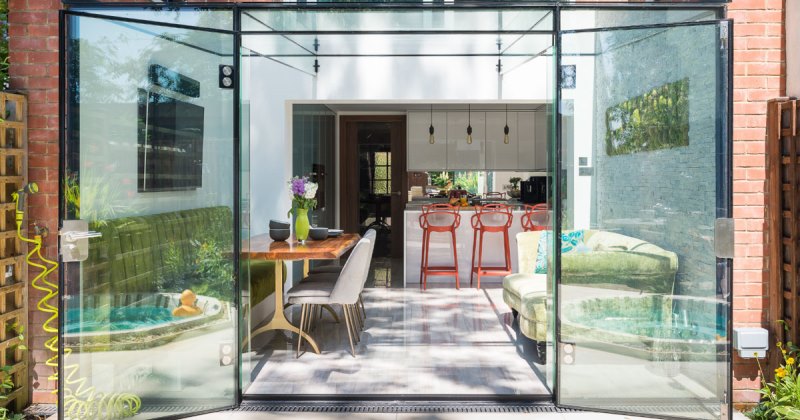Bad puns aside, glass has long been the material of choice for homeowners and property developers who have sought to introduce more light into their homes. Traditionally, glass is used in featureless exterior walls that would otherwise make rooms appear drab and gloomy.
Indeed, it is now fairly common to find improved homes with additional glass pieces, fittings and structures, especially where ceilings are concerned. The ubiquitous glass box extension, which is essentially the same as any ordinary building extension except that it is comprised chiefly of glass, has also served to popularise the movement towards a more glassy home.
In addition to flooding rooms with natural light, which is extremely beneficial to both the mind and body, glass serves to show off the interior decor of a home to a much greater effect than if standard, featureless brick walls were employed throughout. It is difficult to describe the various ways in which natural light affects the balance, tone and mood of a home, but in essence glass can transform a tired and dreary property into one that is imbued with life.
Of course, overhead glass windows, bi-folding doors and box extensions are all established tools employed by ardent home improvement enthusiasts. However, it is worth noting that glass is not limited to these tried and tested techniques. In fact, glass can be used in the home’s interior to great effect in a multitude of ways. Perhaps one of the more exotic uses of glass is in the construction of high-tech staircases and flooring surfaces, which can be used to heat an eco-home or, somewhat ingeniously, transformed between transparent and opaque states at the flick of a switch. Furthermore, there are many stylish, sophisticated and unfortunately expensive items of furniture that comprise entirely of glass, including bookcases and cabinets.
Cool Ideas For Modern Glass Kitchen Extensions






























